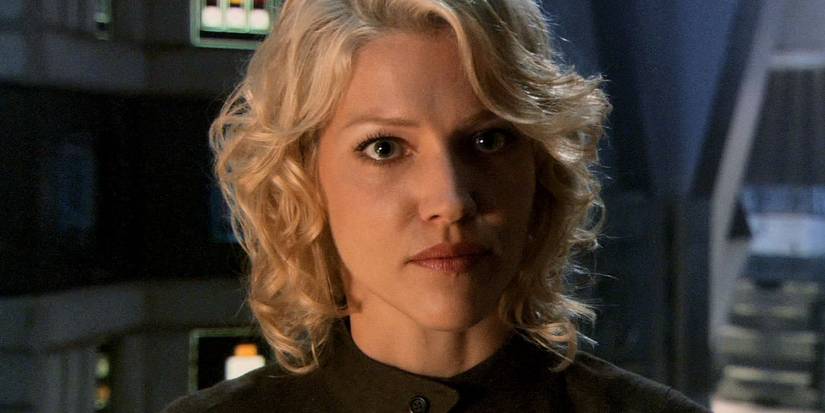
The popular sci-fi series Battlestar Galactica actually has origins in a very old movie, and the two share several common themes. A key improvement made by Ronald D. Moore was changing the enemy Cylons from large, robotic figures to androids that looked exactly like humans. This created a central conflict throughout the show’s four seasons: the constant suspicion and lack of trust caused by fighting an enemy that could be anyone.
For the Cylons, appearing human instead of as robots offered a huge advantage. By blending into human society, they could subtly control politics, beliefs, and decisions, ultimately using humans to further their own goals. Though the story has a modern feel, its core themes are actually quite classic, echoing the earliest ideas in science fiction.
Metropolis Started A Sci-Fi Trope Battlestar Galactica (& Others) Would Follow

Fritz Lang’s Metropolis is a landmark film that helped define early science fiction. Its ambitious scope, large budget, and powerful themes set a new standard for sci-fi movies, and its influence can still be seen in films and television today, even a hundred years later.
The TV series Battlestar Galactica shares a strong connection with Fritz Lang’s film Metropolis. While not the first to show a robot on screen, Metropolis was groundbreaking in presenting robots as a form of disguise or trickery. In the film, inventor Rotwang builds a mechanical being, a ‘Man-Machine,’ and is ordered by the powerful Joh Fredersen to make it look like Maria, the leader of a movement opposing Fredersen’s control of the city.
Fredersen’s plan is to control his unhappy workers and prevent a revolution that’s starting because of Maria. Because the robot looks exactly like her, a heartbreaking misunderstanding happens: Joh’s son sees the robot lovingly with his father. In the end, Rotwang’s invention is used to control and intimidate the people of Metropolis.
The idea of robots pretending to be human has been a common theme in science fiction for a century, and Battlestar Galactica provides a particularly strong example. Similar to Metropolis, the creators of these robot duplicates used them to split people apart and maintain control.
The central fear explored in Battlestar Galactica – that robots could secretly live among us and manipulate our actions – is a concept first powerfully shown in Fritz Lang’s 1927 film.
Other Ways Battlestar Galactica Continues The Spirit Of Metropolis

While Rotwang’s robot from Metropolis is a clear inspiration for the first Cylon, the connections between Battlestar Galactica and Metropolis go much further. Both stories share a key idea: the creation of machines is initially driven by human love.
Both Metropolis and Battlestar Galactica explore the dangers of trying to “play God” by recreating lost loved ones. In Metropolis, the robot was initially designed to bring back a creator’s deceased love, Hel, not to mimic Maria. Similarly, the first human-like Cylon in Battlestar Galactica, Cavil, was modeled after the creator’s father. Both stories suggest that attempting to revive the dead is likely to have negative consequences.
Both Metropolis and Battlestar Galactica explore conflicts rooted in class divisions. Metropolis focuses on how a city’s leaders learn to stop exploiting their workforce, while Battlestar Galactica presents a similar dynamic between Cylons and humans, with the Cylons as the dominant group and the humans in a subordinate position. Ultimately, both stories are about finding a way for these opposing sides to live together peacefully, rather than one side winning and the other being defeated.
The core idea of the film Metropolis is the need for someone to act as a bridge between opposing sides, a leader who can bring about peace. In the movie, that person is Freder Fredersen, the son of Joh Fredersen. Interestingly, Battlestar Galactica draws inspiration from this same concept, much like Fritz Lang’s film.
Prophecy is a central theme in Battlestar Galactica. President Roslin believes she is the leader destined to save her people, as predicted in the Book of Pythia. But the true “mediator” – the person who guides them – turns out to be Starbuck, who understands the strange music and ultimately leads the survivors to a new planet.
Battlestar Galactica Proves One Fear Has Never Left Us

Despite being made nearly a century apart, the films Metropolis and Battlestar Galactica share a common theme: the fear that our creations might one day surpass us, making humanity unnecessary. It’s striking that even in the 1920s, Metropolis envisioned a potentially troubling future for technology. And even when Battlestar Galactica debuted in the 2000s, these ideas still felt like science fiction.
As a huge sci-fi fan, I’ve always loved the idea of robots blending seamlessly into our world – think the Man-Machine or the Cylons from Battlestar Galactica. We’re not quite there yet with physical robots, but with AI advancing so quickly, it feels like we’re getting closer. Honestly, by 2025, creating a convincingly human-like character through AI on screen feels totally achievable. It makes you wonder if those cautionary tales sci-fi has been telling us for almost a century are finally starting to come true, doesn’t it?
Read More
- The Most Jaw-Dropping Pop Culture Moments of 2025 Revealed
- Ashes of Creation Rogue Guide for Beginners
- ARC Raiders – All NEW Quest Locations & How to Complete Them in Cold Snap
- Where Winds Meet: How To Defeat Shadow Puppeteer (Boss Guide)
- Best Controller Settings for ARC Raiders
- Where Winds Meet: Best Weapon Combinations
- Ashes of Creation Mage Guide for Beginners
- Hazbin Hotel season 3 release date speculation and latest news
- 5 Things We Want to See in Avengers: Doomsday’s First Trailer
- 5 Most Exciting New Switch 2 Games Confirmed for 2026 (So Far)
2025-11-03 23:21